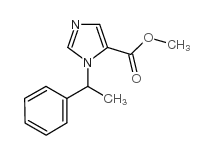Pharmacokinetic and pharmacodynamic properties of metomidate in turbot (Scophthalmus maximus) and halibut (Hippoglossus hippoglossus).
M K Hansen, U Nymoen, T E Horsberg
文献索引:J. Vet. Pharmacol. Ther. 26(2) , 95-103, (2003)
全文:HTML全文
摘要
Metomidate was administered to halibut (Hippoglossus hippoglossus) and turbot (Scophthalmus maximus) intravenously at a dose of 3 mg/kg bodyweight, as a bath treatment at a dose of 9 mg/L water for 5 min to study the disposition of metomidate, and as bath treatment (9 mg/L) for 10 min to study the absorption and effect of metomidate on respiration and balance/motor control. Additionally, turbot were given metomidate orally at a dose of 7 mg/kg. The studies were performed in seawater at a temperature of 10.3 +/- 0.4 degrees C (halibut) and 18.0 +/- 0.3 degrees C (turbot). Pharmacokinetic modeling of the data showed that metomidate had shorter elimination half-life and higher plasma concentrations in turbot compared with halibut, both species displaying a rapid uptake, distribution and excretion. Following intravenous administration, the volumes of distribution at steady state (Vd(ss)) were 0.21 L/kg (halibut) and 0.44 L/kg (turbot). Plasma clearances (Cl) were 0.099 L/h.kg in halibut and 0.26 L/h.kg in turbot and the elimination half-lives (t(1/2)lambdaz) were calculated to be 5.8 h and 2.2 h in halibut and turbot, respectively. Mean residence times (MRT) were 2.2 h in halibut and 1.7 h in turbot. Following oral administration, the t(1/2)lambdaz was 3.5 h in turbot. The maximum plasma concentration (Cmax) was 7.8 mg/L in turbot 1 h after administration. The oral bioavailability (F) was calculated to 100% in turbot. Following 5 min bath the maximum plasma concentrations (Cmax), which were observed immediately after end of the bath, were 9.5 mg/L and 13.3 mg/L in halibut and turbot, respectively. Metomidate rapidly immobilized the fish, with respiratory depression, reduced heart rate, and loss of balance/motor control within 1 min (mean). Recovery was slow, with resumed balance/motor control after 26.4 min. Opercular respiration movements were resumed more rapidly with a recorded mean of 1.7 min. Oral administration was demonstrated to be a way of immobilizing fish, for example in large aquariums, without exposing them to unwanted stress.
相关化合物
| 结构式 | 名称/CAS号 | 分子式 | 全部文献 |
|---|---|---|---|
 |
美托咪酯
CAS:5377-20-8 |
C13H14N2O2 |
|
Advancing novel anesthetics: pharmacodynamic and pharmacokin...
2014-12-01 [Anesthesiology 121(6) , 1203-16, (2014)] |
|
Anesthesia induces stress in Atlantic salmon (Salmo salar), ...
2010-09-01 [Fish Physiol. Biochem. 36(3) , 719-30, (2010)] |
|
Rates of cortisol increase and decrease in channel catfish a...
2006-05-01 [Comp. Biochem. Physiol. C. Toxicol. Pharmacol. 143(1) , 134-9, (2006)] |
|
The pharmacology of cyclopropyl-methoxycarbonyl metomidate: ...
2014-03-01 [Anesth. Analg. 118(3) , 563-7, (2014)] |
|
Pre-anaesthetic metomidate sedation delays the stress respon...
2012-04-01 [Fish Physiol. Biochem. 38(2) , 401-11, (2012)] |